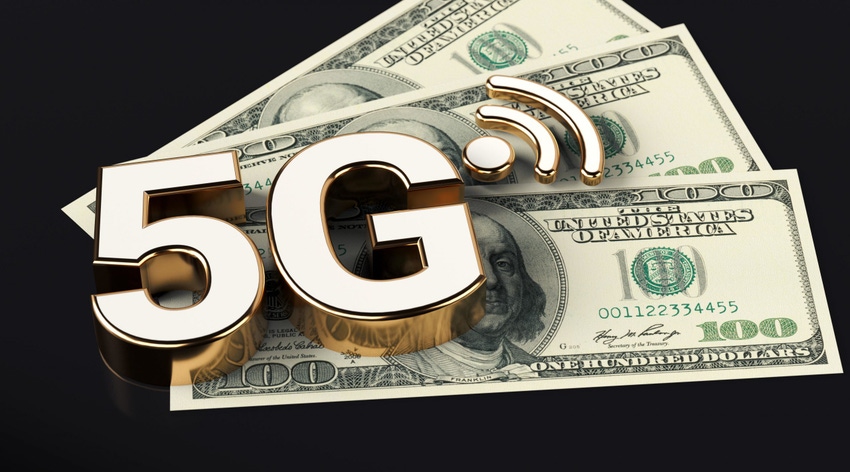5G: modernize to monetize
Generating a return on this enormous investment is critical to the future health of the industry. In fact, if we don’t figure out how to monetize 5G, there will be no 6G.
May 30, 2023

Telecoms.com periodically invites expert third parties to share their views on the industry’s most pressing issues. In this piece Jean Lawrence, Vice President, Marketing & Communications, Cloud and Network Services at Nokia, looks at how best to go about monetizing 5G.
Over the course of my 25 years in the telecom industry, I’ve seen multiple waves of major investment, often with uncertain future returns. We are poised to repeat this with 5G.
In fact, according to recent research from Analysys Mason, communication service providers (CSPs) invested $103B in building 5G networks in 2022 and are expected to spend an additional $129B in 2023.
Generating a return on this enormous investment is critical to the future health of the industry. In fact, if we don’t figure out how to monetize 5G, there will be no 6G.
The business models, relationships and technology of yesteryear lacked the scale and relevance to monetize 5G. Instead, we need to modernize our ways of interacting and operating so we can capitalize on 5G’s promise of super speed, ultra-low latency, connected devices everywhere, location precision, control of quality of services and more.
But how? This is our industry’s multi-billion-dollar question. Let’s explore three key aspects of modernizing our approach so we can monetize 5G.
Ecosystems
Many service providers are accustomed to a simple B2C connectivity-based model that represents very limited revenue growth for 5G. Instead, we need to think about creating ecosystems where players across the value chain can come together to solve industry problems and generate revenue.
A prime example of ecosystems in action is mobile private networks. Often deployed in factories, ports and mines, these ecosystems contain secure connectivity, where 5G’s low latency and reliability far exceed Wi-Fi networks’ ability to control autonomous mobile robots safely, in real time, and around many obstacles.
Together with that connectivity, service providers are partnering with equipment vendors to offer industrial edge platforms to host applications like virtual and augmented reality and scene analytics.
On top of that, the ecosystem contains a variety of rugged devices including wearable cameras and chemical-resistant tablets. Service providers like Verizon are accelerating their 5G monetization by creating such ecosystems in areas like ports and factories. Not only are they driving new revenue streams, but they are also improving worker efficiency, safety and sustainable business practices.
API exposure
Thanks to its service-based architecture, 5G networks are inherently more “programmable” than their predecessors, making it much easier for application developers to use application programming interfaces (APIs) to tap into cool new capabilities.
Imagine you are among the millions of Taylor Swift fans who came up empty-handed in the ticket sales for her tour. With the power of 5G networks, you could sit at home with a VR headset and experience the next best thing.
An 8K camera around the stage could capture Taylor from every angle – diving below the stage, strumming her guitar and climbing ladders in sparkly dresses. Alternatively, you’re a hockey fan who wants to experience the viewpoint of a goalie, referee or forward about to score.
Finnish service provider Elisa is trialing capabilities just like this in Finland, home to many large entertainment events. Elisa is exposing 5G network APIs and partnering with application developers to enable these real-time, low latency experiences that provide a path to B2B and B2C monetization.
SaaS delivery models
SaaS has been a mainstay of the IT world for two decades thanks to its agility and speed to time to market.
Telecom SaaS is beginning to take hold, providing those same benefits in the network itself. 5G core networks can be spun up as-a-service in a matter of hours rather than months, allowing service providers to quickly experiment with new scenarios, like the Elisa experiences described earlier, scaling up or down as they learn what appeals to customers.
Similarly, 5G charging as-a-service enables service providers to quickly monetize any measurable metric and trial concepts like charging per game, concert, song, minute or any other metric.
In conclusion, we are on the brink of an exciting new 5G world where experimentation and agility will be critical for discovering and monetizing new use cases. By modernizing our thinking and approach towards ecosystems, API exposure and telecom SaaS, we will unlock the potential of 5G to transform society and deliver on service providers’ bottom line.
 Jean Lawrence leads the global marketing and communications organization for Nokia Cloud & Network Services. She helps communications service providers and enterprises realize the benefits of 5G, cloud and the digital economy by automating operations, deploying SaaS, and monetizing new business models .In her 25 years of tech industry experience, Jean has held marketing, strategy and product development leadership positions at Oracle, Computer Sciences Corporation, Motorola, and T-Mobile. She holds an MBA from the Kellogg School of Management at Northwestern University and a Bachelor of Arts from the University of Notre Dame.
Jean Lawrence leads the global marketing and communications organization for Nokia Cloud & Network Services. She helps communications service providers and enterprises realize the benefits of 5G, cloud and the digital economy by automating operations, deploying SaaS, and monetizing new business models .In her 25 years of tech industry experience, Jean has held marketing, strategy and product development leadership positions at Oracle, Computer Sciences Corporation, Motorola, and T-Mobile. She holds an MBA from the Kellogg School of Management at Northwestern University and a Bachelor of Arts from the University of Notre Dame.
Get the latest news straight to your inbox. Register for the Telecoms.com newsletter here.
Read more about:
DiscussionAbout the Author(s)
You May Also Like








.png?width=300&auto=webp&quality=80&disable=upscale)


_1.jpg?width=300&auto=webp&quality=80&disable=upscale)


.png?width=800&auto=webp&quality=80&disable=upscale)